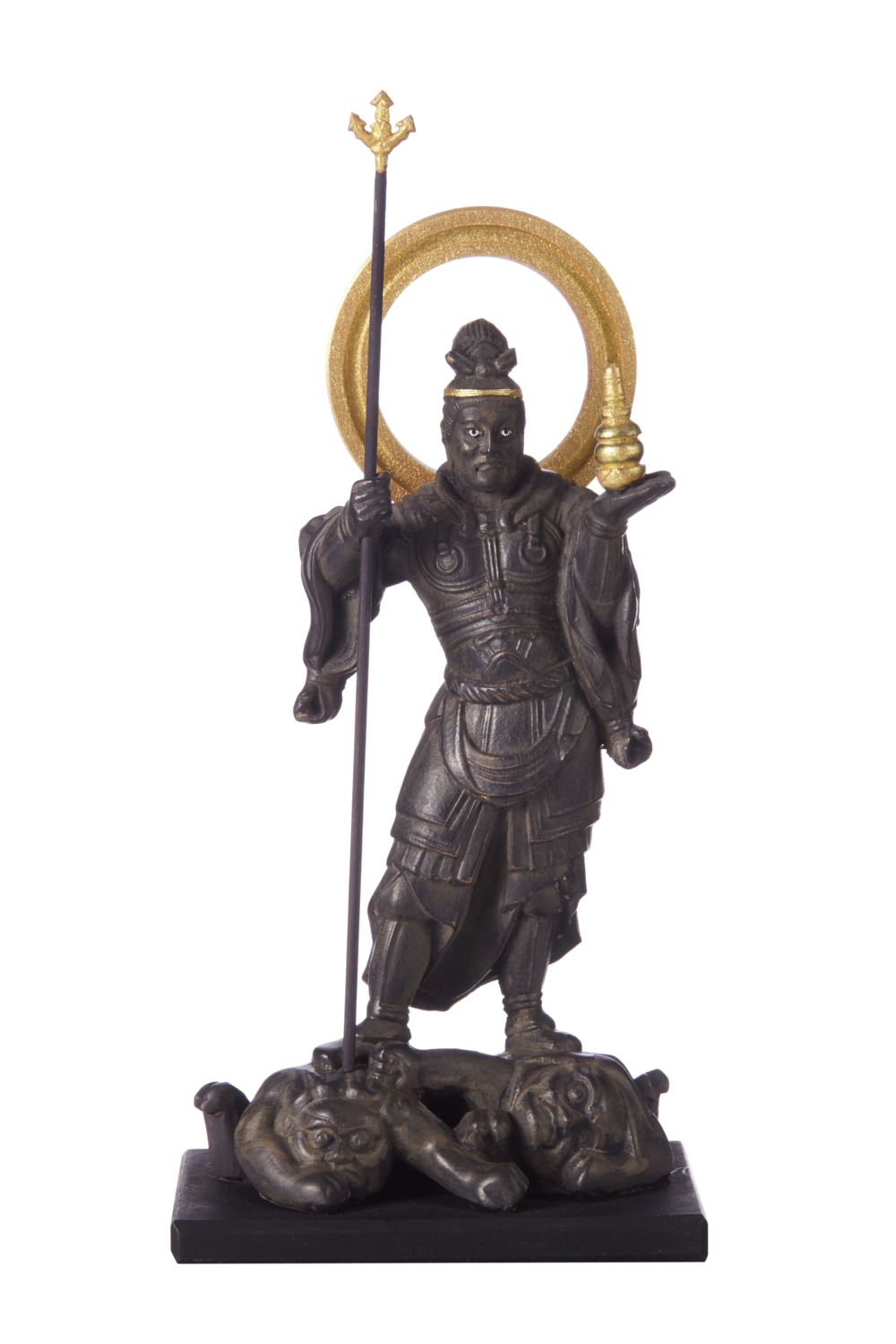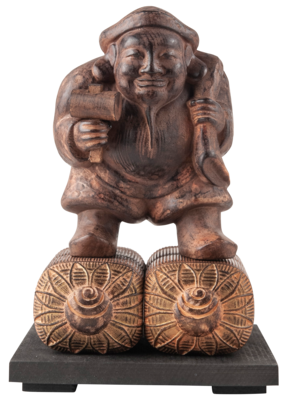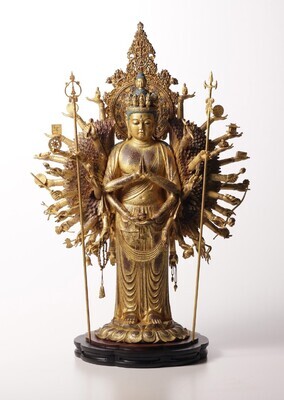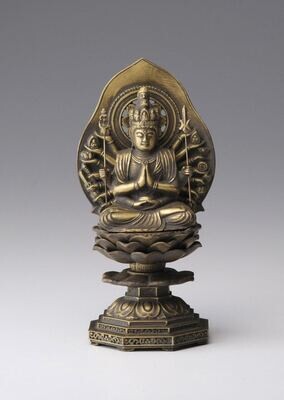Bisyamon-ten (古代色毘沙門天)
In Japan, Bishamonten is thought of as an armor-clad god of war or warriors. Bishamon is portrayed holding a spear in one hand and a small pagoda in the other hand, the latter symbolizing the divine treasure house, whose contents he both guards and gives away. In Japanese folklore, he is one of the Seven Lucky Gods.
Ancient Shikibishamon-ten is a sacred figure who received special reverence in the context of Japanese Buddhism and Shintoism. He is a type of Bishamonten and his worship has deep roots in ancient Japan. Here is a detailed explanation of Ancient Shikibishamon-ten:
The reverence for Ancient Shikibishamon-ten in ancient Japan stemmed from the fusion of Buddhism and Shintoism. He is commonly regarded as one of the Four Heavenly Kings, with his role being the guardian of the east and a symbol of wealth and prosperity. The Four Heavenly Kings are celestial beings responsible for safeguarding the four cardinal directions and upholding religious order in Buddhist cosmology. Ancient Shikibishamon-ten is specifically associated with the eastern direction and is often depicted holding a spear or a treasure, emphasizing his role as a guardian and bestower of riches.
In ancient Japan, the worship of Ancient Shikibishamon-ten held particular significance, especially among the warrior class and ruling elites. He was revered as a deity connected to warfare and military strategy. Prayers and rituals were often performed to seek victory in battles and protection from adversaries. His role as a guardian deity extended to the defense of the nation and its rulers.
Moreover, Ancient Shikibishamon-ten was also worshipped as a deity of wealth and prosperity, making him a focal point for merchants and farmers. People turned to him to invoke bountiful harvests and successful trade ventures. His association with material wealth and abundance made him a popular figure among commoners seeking economic well-being.
The faith in Ancient Shikibishamon-ten reflects the deep connection between his divine power and various aspects of daily life, including warfare, economic activities, and societal order. He served as a guardian deity and a symbol of prosperity for the ancient Japanese society.
In conclusion, Ancient Shikibishamon-ten occupies a significant place in the history of Japan's religious and cultural heritage. His worship, rooted in both Buddhism and Shintoism, encompassed elements of protection, prosperity, and military success. He has remained a powerful guardian figure throughout ancient Japan's history, embodying the aspirations and concerns of the people of that time.
- Size: H11×W5.8×D4 (cm), 40g
- Material: Tsuge (柘植)
- Made in China
- You can choose the option to consecrate this statue (give an eye-opening ceremony) before it is shipped from Japan. If you choose this option, we will bring the statue to a Japanese temple, and pay them the necessary fees so that your statue is properly consecrated. The temple will issue a certificate of proof with your name on it, which will also be shipped together with your statue
- Shipped globally from Japan by using DHL. DHL is the world-class shipping services provider who makes international delivery a fast, smooth, and hassle-free experience. Delivery time can be faster than when shopping at an e-commerce website in your country, and of course your package will be covered by insurance. You can check the shipping cost for your entire order before you make a purchase







